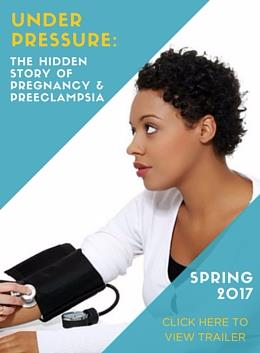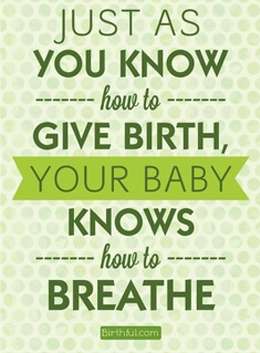By Emily Monaco
It’s that time of the month again. You’re plagued with monstermenstrualcrampsthat just won’t let up. But instead of cracking out on Midol for a little relief, have you ever considered some natural menstrual cramp remedies?
Our experts are here to help.
What Causes Menstrual Cramps?
While many women are plagued with menstrual cramps every month, few understand exactly what causes them, and this is a problem in and of itself.
“Before you talk about remedies for cramps, it is important to understand the cause of them,” says Ramona Fasula, a Certified Holistic Health Coach and CEO of Wellness by Ramona. “I believe that understanding the root cause of the condition is the first step to fixing it.”
So what is the true cause of menstrual cramps?
Dr. Kecia Gaither, a Maternal Fetal Medicine Specialist and Director of Perinatal Outreach at Montefiore MedicalCenter and Albert Einstein College of Medicine in the Bronx, explains what you might have forgotten since 5thgrade health: “Each month, the uterine lining builds up in preparation for pregnancy,” she says. “If no fertilization occurs, the thickened uterine lining is no longer required and as such is shed; this shedding is the menstrual process.”
Maybe you already knew that. But what you might not have known is thatwhen this lining sheds, the uterus contracts to help release it, and this is where cramps come in. Simply stated, menstrual cramps are caused by contractions in the uterus. “If the uterus contracts too strongly, it can press against nearby blood vessels and cut off the supply of oxygen to the muscle tissues in the uterus,” explains Fasula. “When the oxygen supply is cut off, pain results.”
But not all women feel the same pain. Some feel extreme pain, while others barely notice it. Carina Parikh, MScN, MSiMR, a holistic nutritionist at Kate Naumes, ND Holistic Wellness, breaks this paininto two categories, primary and secondary menstrual cramps or dysmenorrhea. “Primary dysmenorrhea represents menstrual pain that is not associated with any other conditions, while secondary dysmenorrhea is a result of another medical condition, such as endometriosis or fibroids,” she explains. “Prostaglandin is a chemical that causes the uterus to contract, which causes the cramping feeling, so women with higher levels of prostaglandins tend to have more menstrual pain.”
So how can you know if you have more prostaglandins? Usually, this tendency is linkedto one ofa number of factors.According to Gaither, a narrow cervical opening could make it difficult for the lining to pass. AsDr. Prudence Hall, a Santa Monica, California gynecologist and founder of The Hall Center explains, “A woman’s cervix needs to open slightly to allow the blood to pass, and the contractions (cramps) needed to open the cervix can be experienced in the same way as mini labor contractions.”
Increased pain could also be linked to a number of underlying conditions,including fibroids, adenomyosis, imbalanced hormones such as low thyroid, ovarian cysts, reproductive infections, endometriosis… all can lead to even more painful periods. Stephanie Mazzanti, LCPC, E RYT 200, Mind-Body Therapist at Cancer Treatment Centers of America at Midwestern Regional Medical Center, highlights the importance of speaking to a doctor if you think your cramps are worse than usual, in order to rule out any of these additional problems. “Pelvic ultrasounds are needed to make a correct diagnosis,” agreesHall.
But if your period is extremely painful and you’re not suffering from an additional problem, the culprit could be multi-fold. Khara Lucius, ND, FABNO, Naturopathic Oncology Provider at Cancer Treatment Centers of America at Midwestern Regional Medical Center, says that risk factors for the more than fifty percent of women who report severe menstrual cramps include beingunder 30, beginning tomenstruate beforeage 12, a BMI of under 20, and family predisposition.
But within this group–and even without–some people are even more at risk for severe cramps. Tiffany Cruikshank (L.A.c., MAOM, RYT) is a health and wellness expert and the founder of Yoga Medicine, cites inflammation and low magnesium,often associated with high stress, as factors.Dr. Tanya Kormeili,MD, FAAD, a Clinical Instructor at UCLA,agrees. “In general, stress is the biggest culprit,” she says.
Tansy M. Briggs, DOM, L.OM, speaking from an Integrative Oriental Medicine point of view, cites “nutritional deficiencies or excesses” as well as mineral deficiencies as some of the culprits that lead to “stagnation,”a term in Eastern medicine linked to the absence of blood circulation, which is seen as a root cause for many health issues, including menstrual cramps.
With this understanding of the core problems that cause menstrual cramps, we can much more easily find natural remedies to cramping.
1. Diet is Key
You likely noticed one common theme amongst our experts: inflammation, nutritional deficiencies, and even stress are all major culprits, and all can all be affected by diet. And while we know the first thing you want to do when you get your period is hunker down with some chocolate and pizza, the worse you eat, the worse you’ll feel.
Keep Away from Inflammatory Foods
“Fats are precursors to some of the chemicals involved in making the uterus contract,” explains Gaither. “Therefore, theoretically decreasing the fat content of the diet may play a role conversely in decreasing menstrual pains.”
But not all fats are bad guys. Parikh’s suggestions of what to eat to keep period pains at bay include adding moreomega-3 fatty acidsand vitamin D to your diet, which can help decrease the levels of prostaglandins in the system and can be found in salmon, eggs, and dark leafy greens.
The fats you’re going to want to avoid are animal fats, which can cause inflammation. Fasula explains that the main problem is the highly inflammatory Standard America Diet. “It is severely lacking in anti-oxidants and important nutrients that prevent and control inflammation, which is the underlying cause of most diseases.” She calls for adding anti-inflammatory foods to your diet, including tomatoes, olive oil, nuts, fatty fish, berries and citrus.
You might even want to veer even closer to a plant-based diet to stave off pains. Accordingto Gaither, “Some small studies have looked at implementing vegan or plant-based diets and have noted that those women employing these diet changes experienced decreased volume of menstrual flow and the pain that goes along with it.”Lucius agrees, citing researchlinking a low-fat, vegetarian diet to reduced menstrual cramps.
And you’ll also want to keep certain things off the menu, including sugar. According toSusi Roos, RN, MDiv, Mind-Body Therapist at Cancer Treatment Centers of America at Midwestern Regional Medical Center, sugar is a source of chronic inflammation in the body and can therefore lead to more painful cramps.
Up Your Intake of Useful Minerals and Vitamins
“Magnesium is a key nutrient for preventing water retention, which is known to contribute to menstrual pain, so eating foods such as bananas, pumpkin seeds, and dark leafy greens can also help with this,” explains Parikh. And Christina Major, a MS Holistic Nutritionist and Herbalist and the Health Recovery Expert of Crystal Holistic Health says that foods rich in both magnesium and vitamin A are even better. She suggests planning plant-based meals with magnesium-rich green, leafy vegetables, and vitamin A-rich yellow and orange vegetables. And Hall reminds us that chocolate is also high in magnesium, so you have a good excuse to indulge in your square or two of dark chocolate during your period.
But, that’s not all.
“Brassica vegetables, such as broccoli, cabbage, kale, cauliflower and Brussels sprouts contain carbon-3-inositol, which helps regulate estrogen activity and can ease bloating and menstrual discomfort,” says Parikh.
Alexandria Callahan, MA, LPC, R-DMT, GLCMA, Mind-Body Therapist at Cancer Treatment Centers of America at Midwestern Regional Medical Center suggests “foods with a bit of spice,” which she says “can assist in warming the abdominal area to ease cramp discomfort,” though she notes that some spicy foods can cause indigestion, which can make the problem worse, so proceed with caution.
New York Naturopath Dr. Serena Goldstein, ND also suggests seed cycling as an option. She recommends alternating ground flax, chia or pumpkin seeds and sesame or sunflower seeds throughout your cycle: in the first half of the cycle, combine 1-2 tablespoons of ground flax, chia or pumpkin seeds with a tablespoon of quality fish oil; in the second half of the cycle, combine 1-2 tablespoons of ground sesame or sunflower seeds with 1-2 grams of evening primrose oil. “Each set of seeds promotes the proper hormones that are prevalent throughout the cycle, and provide the fiber and nutrients needed to alsohelp the body metabolize hormones,” she says. In finding this balance, you may be able to reduce cramping.
What to Avoid
As for what to avoid, the answer may sound simple, and yet for many, it’s a shocker: sugar, processed foods, and anything with preservatives can all make cramping worse, no matter how convinced you are that greasy fries or a sugary candybar will help. Lucius cites astudywhere certain bad dietary habits like skipping breakfast, eating more fast food or processed foods were linked to increased cramping, and Parikh highlightsthe importance of avoiding salty foods, which can increase water retention and thus menstrual pain.
Parikhalso warns against any foods that contain a higher ratio of omega-6 fatty acids as compared to omega-3s, such as vegetable oils, corn, soybean oil, or margarine.
The jury’s still out on caffeine, though some experts say to avoid it. Parikh explains that “the caffeine can promote water retention and disrupt your digestive system even more. The same goes for alcohol.” Lori Kenyon Farley, a Certified Nutrition Consultant specializing in wellness, fitness and anti-aging and one of the experts behind ProjectJuice.com, agrees.“It causes blood vessels to constrict, which can cause increased cramping,” she says.“If you are prone to cramping, avoid coffee for a week prior to your period for best results.”
And when you’re avoiding animal fats, don’t forget about dairy. According to Parikh, “Dairy products contain arachadonic acid, which is a substance in your body that is converted into prostaglandins.” And as you know by now, prostaglandins are a big no-no if you don’t want pain during your period.
2. Take your Multi-vitamin
We know remembering to take your one-a-day can be a tough task, but come period time you’ll want to be religious about it – and you may want to add a few more to the mix.
Cruikshank highlights a few important vitamins to be taking, including magnesium and B vitamins. “You need to take them daily to see the results,” she says.
Both can of course be integratedvia your diet, but Cruikshank says she usually recommends vitamin B supplements as well. “For the oils, the amount that is needed to influence this is usually easier to take in a pill form,” she says. “But hemp oil or fish or fish oil can also be a good source for good fats as well as trying to decrease bad fats.”
Fasula suggests upping your intake of brown rice during your period, as it contains B6 and may prevent bloating, as will zinc and calcium.
3. Do Some Light Exercise
You’re bloated, in pain and just want to veg out… but a bit of exercise may help solve your pain problem.
According to Farley, aerobic exercises providenatural pain relief. “The increased blood flow and the endorphins help counteract the prostaglandins and reduce cramping.”Gaither even compares these endorphins to a “natural morphine.”
But Parikh concedes that exercise can seem impossible when you’re feeling a great deal of pain, and she therefore suggests low impact activities like walking or yoga, which “are still great for helping fight menstrual pain and are easier to do when you are feeling unwell.”
Is Yoga the Answer?
In fact, it seems that yoga may be one of the major good guys when combatting period pain. Lucius cites a specific study outlining the benefits of yoga during your period, and Mazzanti has a few suggestions for specific yoga positions that could help, including Janusirsasana, Bound Malasana, Camel pose, Embryo pose and Supta padangusthasana. Kenyon adds to that Cobra pose, Cat-Cow pose and Fish pose.
A word of caution if you’re planning to venture into some yoga poses while on your period: “Inversions are never recommended while on your period,” Mazzanti cautions. “So even if you can usually pop up into headstand, you might reconsider doing that if it is the that time of the month.”
Other Lighter Options
Callahan also suggests that you prime your body for exercise while on your period by planning ahead. “I recommend having some sort of movement regimen in place that you do regularly so your body is used to it,” she says. “That way, upon onset of cramping – or even a few days prior – your body can find relaxation rather than additional strain when doing exercises, yoga poses, etc.”
She also suggests Dance Movement Therapy, which she says “can assist in easing discomfort through gentle dance movements, depending on the intensity. An aspect of DMT works with the body’s natural rhythms, such as rocking or swaying movements that can be beneficial to women struggling with cramping.”
Preemptive Exercising
But many of our experts say that you don’t necessarily need to worry about exercising during your period; it’s the other 27 days that will make a difference. In fact, according to Hall, “by the time (cramps) occur, regular exercise doesn’t relieve (them) much.”
Instead, make sure that you engage your core muscles and abs in your regular workouts for reduced cramps during your period. “The better toned and active your lower abdominal muscles are, the better in control of your cramps you will be,” says Major.
Briggs says that according to the traditions of Eastern medicine to which she ascribes, “Strong exercise during your cycle can be detrimental and may actually make the cramping worse.”
4. Turn Up the Heat
Remembering that cramps are due to contracting muscles makes this tip a no-brainer — apply heat.
“A heating pad is a woman’s best friend when it comes to menstrual cramps,” says Fasula. “Heat opens blood vessels and improves blood flow and dissipates the pain.”
But if regular heat packs and bathtub soaks don’t help, Cruikshank has another suggestion: castor oil packs. “These are a great way to detox the liver, often associated with menstrual cramps,” she says, though this isn’t an immediate reliever, but rather a long-term solution. You’ll need to apply them a few times the week before your period. To do so, apply castor oil to the belly and top with a piece of wool cloth, followed by plastic wrap and a hot pack wrapped in a towel. Rest for 20-40 minutes before removing.
Callahan cites Reikias an option; thistherapy helps stimulate positive energy flow and add a bit of heat to the affected region. “Within a session, a certified Reiki therapist places his or her hands in various positions lightly or slightly above a person’s body,” she explains. “When practicing Reiki on clients or patients, I have found that the warmth that can be produced during a session can ease discomfort and tightening in the muscles.”
And if you aren’t feeling enough heat yet, several of our experts cite orgasm as a great way to release tension in the uterus and relieve pain.
5. Go the Herbal Route
Since cramping is really all about muscle spasms, anti-spasmodic herbs can help reduce them.
Cindy Santa Ana, an AADP Integrative Nutrition Health Coach and the author of “Unprocessed Living” says that she often suggestsClary Sage essential oil, rubbed on the lower abdomen, when pain starts. “It works just as well as an ibuprofen or acetaminophen, but safer,” she explains. “It regulates estrogen and acts as an antispasmodic.”
Hall likes using cramp bark in tincture form. “Adding magnesium to the cramp bark (500-1000mg) and Epsom’s bath (magnesium) helps ease menstrual cramps.”
Parikh suggests anti-inflammatory ginger tea and aromatherapy medicines like Germanchamomile, sweet marjoram and sweet fennel. To this list, Gaither adds valerian root, feverfew, wild yam, black cohosh, yarrow, rosemary, lavender, jasmine and geranium and red raspberry, and Lucius cites several specific studies linked to Valerian, an herb that reduces muscle spasms, and Himalayan rhubarb orRheum emodi.
An oft-cited remedy amongst our experts is evening primrose, which “contains chemicals that serve to decrease prostaglandins causing uterine contractions,” according toGaither.
Bear in mind that all of these remedies are preventative and should be taken about 1-2 days before the start of the period, either in tea form, as a massage oil or in conjunction with heat as in a bath.
6. Drink Something
Of course, you can’t drink just anything and hope it will cure your period pains, but there are a few beverages you could try.
Keeping hydrated with lots of water is a good place to start. “Water actually prevents the body from retaining water, and it also prevents bloating,” says Fasula. She suggests warm or hot water, known to increase blood flow to the skin and help in relaxing cramped muscles. She also suggests increasing your consumption of foods with a high water content, like cucumbers, celery and berries.
But some experts have a few other ideas, aside from plain water. You could add some of the herbs cited above to teas or infusions, or you could try mugwort vinegar, which, according to Farley, has helped many women dealing with cramps and pain.
7. Head East for Answers
Some of our experts are particularly well versed in Eastern medicine, likeClaudia Welch, the author of “Balance Hormones Balance Your Life”and the“Art of Medicine.”
“In Eastern medicine, we can consider that one of the primary causes of menstrual cramps is what we call, “stagnation” in the uterus,” she explains.Many of the root causes of stagnation are things that we have already addressed, such as diet or over-consumption of caffeine. But you can also help with stagnation by taking “blood moving” herbs, according to Welch. These herbs can be prescribed by an Eastern or Chinese doctor.
Roos also ascribes to these elements of Eastern medicine and cites the Emotional Freedom Technique as a possible solution. “EFT is helpful for all types of physical discomfort, including menstrual cramps, in part because it helps balance natural rhythms and flows in the body and move blocked energy,” she says. “The experience of pain is never just physical – no matter if the catalyst is clearly a physical condition. EFT helps identify the emotions and stories that release emotional energy and enables a new, more-serving story.”
8. Try Specialty Products
There are some special products and therapies out there that can help even further. Dr. Jeanett Tapia, D.C. uses chiropractic careto help with these problems. “When your spine (especially in your lower back) is not working correctly, it can impair the nerves that direct and monitor the reproductive and hormonal systems,” she says. This disturbance can be a reason behind cramping, and realignment can help stop it.
“While chiropractic care isn’t a treatment for PMS, many women experience increased reproductive health while under chiropractic care,” she says.
Another culprit might be to switch up your sanitary products.Jade & Pearl is a company that produces reusable sea sponge tampons that contain no dioxin, bleach, chemicals or rayon fibers, unlike many traditional tampons. “Our customers have raved, over the years, about the alleviation of menstrual cramps and bloating that they experienced when they switched to Sea Pearls,” says company rep Gloria Starita.
Odyliqueeven sells a blend of essential oils like rosemary, marjoram, and lavender specially designed for easing muscle spasms and relieving cramping. Any one of these specialty products could be used in conjunction with some of our techniques to reduce pain.
9. Sleep Tight
In general, getting enough sleep is crucial to one’s health. But, believe us when we say that it pays to be especially diligent during PMS-prone times. Interruptions in your regular sleep rhythms can interfere with your regular cycle and result in even more irritability, fatigue, and stomach cramping.
Perhaps even more than sleep, relaxation in general can play a role in pain relief. Rememberthat the pain you are experiencing, while unpleasant, is normal. “Allowing your body to go through its natural cycles without medications or suppressants will allow you to understand your cycles better,” says Major. “Pay attention to what you feel, journal the feelings, and accept this is a natural, healthy process.”
Cruikshank highlights the importance of listening to your body as well, be it with regards to exercise, supplements, the application of heat or anything else. “Your body is doing a lot and energetically shedding a lot so it’s an importanttime to nourish your body and make sure to take some rest too,” she says. “We tend to think of our periods as a burden or something painful that we want to be done with but I think it’s a good time to remember the connection of our periods to our fertility and our power as women to create and nourish.”
Kormeili agrees. “I think there is lots of ‘advice’for women. My advice: listen to your body and respect its limits,” she says. “The biggest myth is that there is a universal solution for all women to uniformly have the same period experience.”
With that myth busted, it’s up to you to find the solutions that work for your body.






